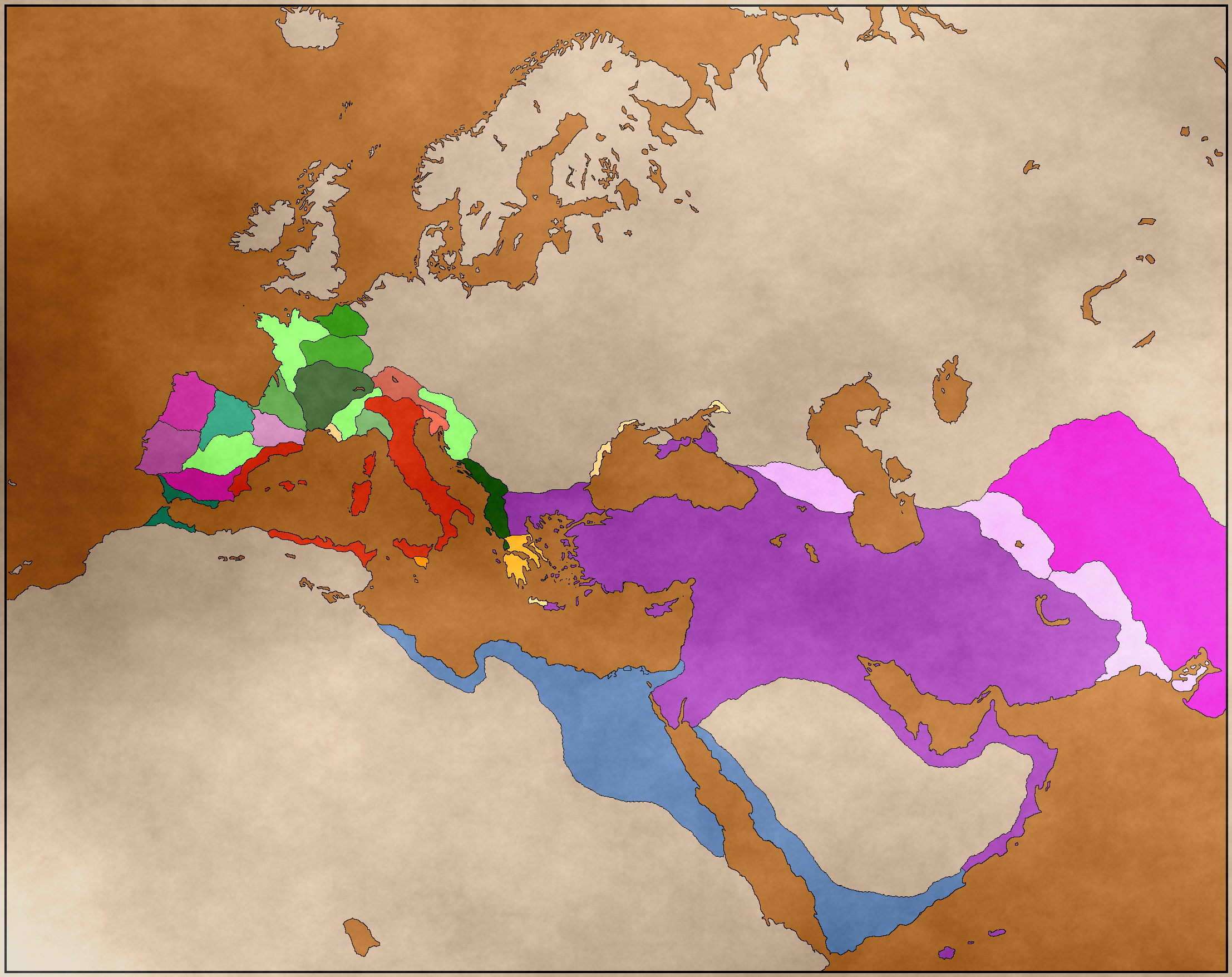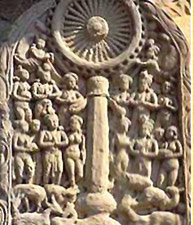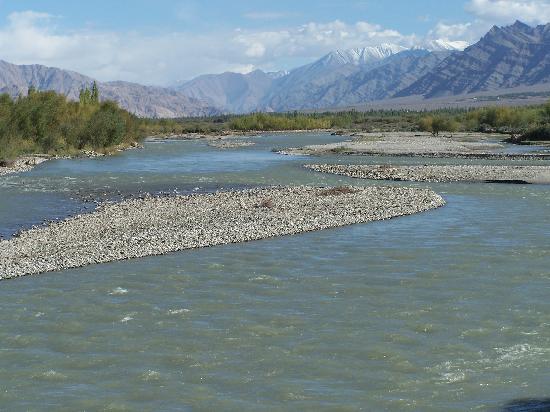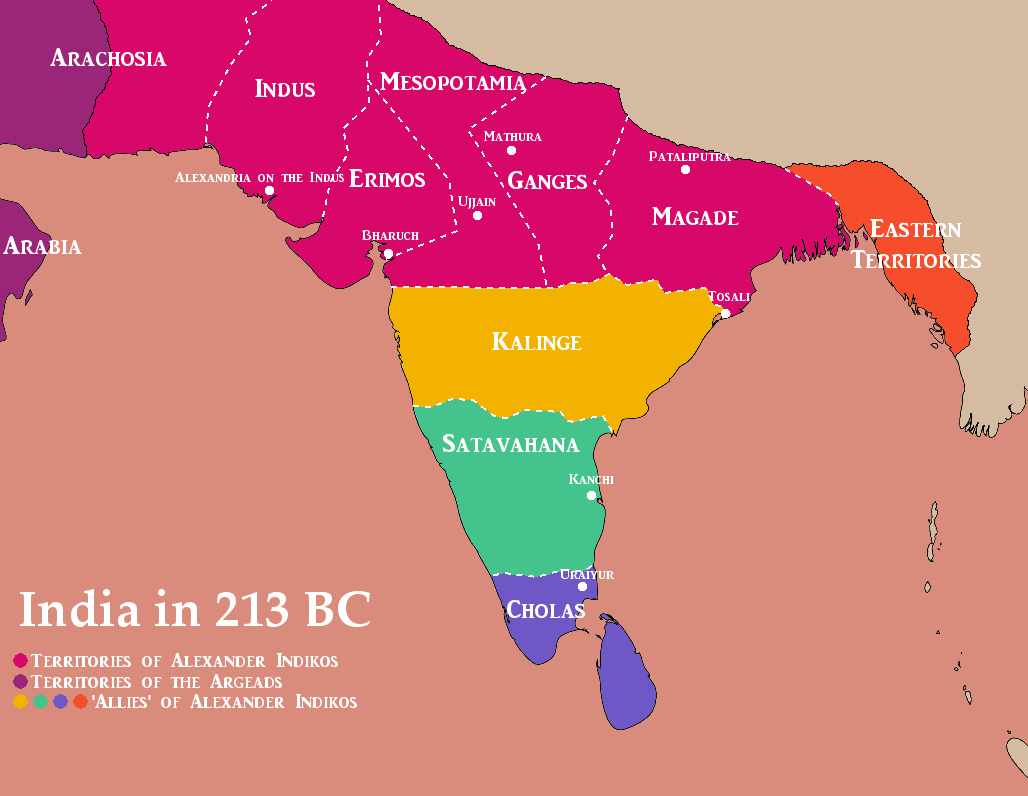This timeline is a reboot/revival of my previous one, Paint your Chariot with Pride. It was not my intention for that to fall into disrepair, but essentially my university studies got too intense and I lost the time that I would have used maintaining the timeline.
Now that my degree is completed, I have a lot more time on my hands, along with a bit more learnin'.
Everything in the previous timeline is still current for this one, though a couple of things will be fleshed out in much more detail.
For those who did not read the previous thread, or would like a catchup, here's a summary!
Our Story So Far
Alexander III of Macedon died four years later than in OTL, during the conquest of Arabia. Succession Wars raged on as in our timeline, but Alexander's firstborn Alexander IV managed to survive and claim his throne. He establishes the Argead dynasty at the head of an Empire stretching between Anatolia and Western India. His son, Alexander V, recovers Macedon, and reforms the Empire to make it more efficient.
The next Emperor, Phillip IV, is a good soldier but fails to check the growth of cliques within the Empire. His son is monstrous, and is assassinated just before news of Phillip IV's death reaches the Empire. A relative, Amyntas, becomes the new Emperor. But his own son sparks a civil war that ends in a new Alexander (VI) becoming Emperor, who moves the Empire in a far more religious direction. The Empire's story is up to the year 224 BC.
The combined strength of the Argeads, Macedonians and Epirotes repels the 280 BC raid of Brennos, which in OTL swept through Macedon and Hellas. Instead, a few years later, these Gauls raid Italy. This causes the Romans of TTL to concentrate on Northern Italy, and to begin intermixing with the other peoples of Italy a little earlier.
The Punic Wars occur, for slightly different reasons. Rome only captures Sardinia and Sicily as a consequence of the First. The Barcids conquer a large Empire in Spain, before leading an attack on Rome as in OTL. This war is possibly more devastating to Rome than the OTL Punic War, and cements the Valerii gens and the Corvi branch as a family of note.
The Romans occupy Carthaginian territory in North Africa without destroying the city, along with Corsica and the East Coast of Spain. The Roman story is up to the year 199 BC.
In addition to the Argeads and Romans, the Epirote state is lead by a dynasty founded by Leonnatus and has become immensely strong. The Greek states of Hellas are unified in a loose coalition, which is still unstable but has survived in various forms for almost a century. They are considered to be under the protection of the Argeads.
In reaction to the Roman presence up north, certain cultures have begun emulating their style of warfare. In particular, the Averni confederation in Gaul have established a semi professionalised army, which has driven processes towards a more centralised state.
An additional factor is the expedition of a minor Argead into India, during the civil war.
How this timeline will be structured
A problem I ran into last time is that I didn't properly plan how the updates would link to one another. This time I'm trying something a little different. I will post a 'world' map for a given date, and then actually list the titles of the updates that will go up to the date of the map.
I hope people enjoy.
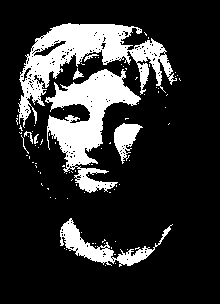
Now that my degree is completed, I have a lot more time on my hands, along with a bit more learnin'.
Everything in the previous timeline is still current for this one, though a couple of things will be fleshed out in much more detail.
For those who did not read the previous thread, or would like a catchup, here's a summary!
Our Story So Far
Alexander III of Macedon died four years later than in OTL, during the conquest of Arabia. Succession Wars raged on as in our timeline, but Alexander's firstborn Alexander IV managed to survive and claim his throne. He establishes the Argead dynasty at the head of an Empire stretching between Anatolia and Western India. His son, Alexander V, recovers Macedon, and reforms the Empire to make it more efficient.
The next Emperor, Phillip IV, is a good soldier but fails to check the growth of cliques within the Empire. His son is monstrous, and is assassinated just before news of Phillip IV's death reaches the Empire. A relative, Amyntas, becomes the new Emperor. But his own son sparks a civil war that ends in a new Alexander (VI) becoming Emperor, who moves the Empire in a far more religious direction. The Empire's story is up to the year 224 BC.
The combined strength of the Argeads, Macedonians and Epirotes repels the 280 BC raid of Brennos, which in OTL swept through Macedon and Hellas. Instead, a few years later, these Gauls raid Italy. This causes the Romans of TTL to concentrate on Northern Italy, and to begin intermixing with the other peoples of Italy a little earlier.
The Punic Wars occur, for slightly different reasons. Rome only captures Sardinia and Sicily as a consequence of the First. The Barcids conquer a large Empire in Spain, before leading an attack on Rome as in OTL. This war is possibly more devastating to Rome than the OTL Punic War, and cements the Valerii gens and the Corvi branch as a family of note.
The Romans occupy Carthaginian territory in North Africa without destroying the city, along with Corsica and the East Coast of Spain. The Roman story is up to the year 199 BC.
In addition to the Argeads and Romans, the Epirote state is lead by a dynasty founded by Leonnatus and has become immensely strong. The Greek states of Hellas are unified in a loose coalition, which is still unstable but has survived in various forms for almost a century. They are considered to be under the protection of the Argeads.
In reaction to the Roman presence up north, certain cultures have begun emulating their style of warfare. In particular, the Averni confederation in Gaul have established a semi professionalised army, which has driven processes towards a more centralised state.
An additional factor is the expedition of a minor Argead into India, during the civil war.
How this timeline will be structured
A problem I ran into last time is that I didn't properly plan how the updates would link to one another. This time I'm trying something a little different. I will post a 'world' map for a given date, and then actually list the titles of the updates that will go up to the date of the map.
I hope people enjoy.

